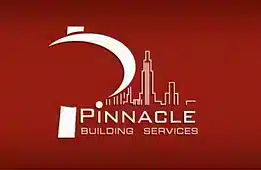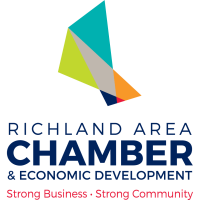Energy management in facilities management is a critical aspect that cannot be overlooked in today’s world. By focusing on planning and controlling the energy consumption in a facility, the practice of this particular discipline can lead to reduced costs, conserved resources, and enhanced operational efficiency overall. But what exactly does energy management entail, and how can we practice it? Read on to discover the answers to these crucial questions – and more!
Understanding the Role of Facilities Managers
Facilities managers are charged with overseeing and managing all the functions of a building or complex to ensure its smooth operation. This includes the management of physical assets, maintenance, cleaning, security, parking, and other support services. They are also responsible for ensuring compliance with health and safety regulations, managing budgets, and planning for future development. A crucial aspect of their role involves implementing energy-efficient practices and sustainability measures to reduce operational costs and environmental impact. Their ultimate goal is to create an optimal working environment that enhances productivity and efficiency.
The Importance of Energy Management in Facilities Management
Energy management is a pivotal aspect of facilities management, with implications for both operational efficiency and environmental sustainability.
- Cost Savings: Energy represents a significant portion of a facility’s operational costs. By implementing energy management strategies, such as improving energy efficiency or shifting to renewable energy sources, facilities managers can significantly reduce these costs. This not only results in direct savings but also insulates the organization from potential energy price volatility.
- Operational Efficiency: Effective energy management can lead to better overall operational efficiency. By understanding and controlling where and how energy is used within a facility, managers can identify areas of waste or inefficiency and take corrective action. This could involve anything from upgrading outdated equipment to revising operational practices.
- Environmental Responsibility: With growing public awareness about climate change and the environmental impact of energy consumption, businesses are under increasing pressure to demonstrate their commitment to sustainability. Effective energy management helps reduce a facility’s carbon footprint, contributing to corporate sustainability goals and improving the organization’s public image.
- Regulatory Compliance: Many jurisdictions have regulations in place to encourage or mandate energy efficiency in commercial buildings. Proactive energy management helps ensure compliance with these regulations, avoiding potential fines or sanctions.
As this short list shows, energy management is a crucial component of facilities management, with benefits that extend beyond cost savings to include improved operational efficiency, enhanced reputation, and regulatory compliance.
Key Strategies for Energy Management
- Energy Audits: The first step towards effective energy management is understanding your current energy usage. An energy audit can help identify areas where energy is being wasted and highlight opportunities for improvement.
- Energy-Efficient Equipment: Investing in energy-efficient equipment, such as LED lighting or high-efficiency HVAC systems, can result in significant energy savings over the long term.
- Renewable Energy Sources: Where possible, facilities managers should consider integrating renewable energy sources, such as solar or wind power, into their energy mix. This not only reduces reliance on non-renewable energy sources but can also result in cost savings.
- Building Automation Systems (BAS): These systems automate the control of various building systems, such as lighting and heating, allowing for more efficient operation and energy savings.
- Employee Training and Engagement: Often, the biggest energy savings can come from changes in behavior. Training employees to be more energy-conscious and encouraging them to participate in energy-saving measures can have a significant impact.
- Regular Maintenance: Regular maintenance of equipment and systems ensures they are running at peak efficiency, reducing energy waste.
- Monitoring and Reporting: Regular monitoring of energy usage allows facilities managers to track their progress and identify areas for further improvement. It’s also important to report on these results, both to keep stakeholders informed and to maintain accountability.
By implementing these strategies, facilities managers can significantly improve their energy management, resulting in cost savings, improved operational efficiency, and a reduced environmental impact.
Steps to Implement Energy Management Strategies
All of these strategies for energy management can be boiled down into just a few simple steps.
#1. Planning
- Assess Current Energy Performance: Begin by conducting a comprehensive energy audit to understand your current energy usage and identify areas for improvement.
- Set Energy Policy and Goals: Establish a clear energy policy for your facility, outlining your commitment to energy efficiency. Set measurable goals that align with this policy.
- Assemble Your Energy Team: Identify key stakeholders within your organization who will be responsible for implementing and maintaining your energy management strategy.
#2. Implementing
- Identify Opportunities for Improvement: Based on your energy audit, identify specific strategies for reducing energy consumption. This might include upgrading to energy-efficient equipment, improving insulation, or shifting to renewable energy sources.
- Develop an Action Plan: Create a detailed plan outlining the steps you will take to achieve your energy goals. This should include timelines, responsibilities, and estimated costs.
- Communicate Your Plan: Ensure all employees are aware of your energy management plan and their role in its implementation. Consider providing training to help them understand how they can contribute.
- Implement Your Plan: Begin taking action according to your plan. This might involve making physical changes to your facility, adjusting operational practices, or launching employee engagement initiatives.
#3. Monitoring
- Track Progress: Use the tracking system developed as part of your action plan to monitor progress regularly. This might involve reviewing utility bills, conducting regular energy audits, or using energy management software.
- Analyze Performance Metrics: Regularly review your energy performance metrics to identify trends and assess the effectiveness of your energy management strategies.
- Make Adjustments as Needed: If you’re not meeting your energy goals, don’t be afraid to make adjustments. Energy management is an ongoing process that requires flexibility and adaptation.
- Report on Your Progress: Regularly report on your progress to stakeholders. Celebrate successes and be transparent about challenges. This not only keeps everyone informed but also helps maintain accountability and momentum.
By following this guide, facilities managers can effectively plan, implement, and monitor an energy management strategy.
The Future of Energy Management in Facilities Management
The future of energy management in facilities management is likely to be shaped by several key trends:
- Increased Use of Technology: As technology continues to advance, we can expect it to play an even greater role in energy management. This could include more sophisticated energy monitoring and management systems, the increased use of AI and machine learning to optimize energy usage, and the integration of IoT devices for real-time data collection and analysis.
- Greater Focus on Renewable Energy: With growing awareness of the environmental impact of fossil fuels, there is likely to be an increased focus on renewable energy sources in facilities management. This could involve the installation of solar panels or wind turbines, the use of geothermal heating and cooling systems, or the purchase of renewable energy credits.
- More Stringent Regulations: As governments around the world seek to reduce greenhouse gas emissions, we can expect to see more stringent energy efficiency regulations. This will require facilities managers to stay up-to-date with the latest regulations and ensure their buildings are compliant.
- Sustainability as a Priority: Sustainability is becoming increasingly important to businesses and their stakeholders. This means that energy management strategies will need to not only focus on cost savings but also demonstrate a commitment to reducing the facility’s environmental impact.
- Enhanced Building Design: The design of buildings is likely to increasingly incorporate energy efficiency considerations. This might include the use of natural light, improved insulation, or the incorporation of green spaces for natural cooling.
In summary, the future of energy management in facilities management will likely be characterized by increased use of technology, a greater focus on renewable energy and sustainability, more stringent regulations, and enhanced building design. By staying abreast of these trends, facilities managers can ensure they are prepared for the future.
The role facilities managers play in their organizations is pivotal, and the impact of their decisions extends far beyond the walls of their buildings. By embracing continuous learning, leveraging technology, focusing on sustainability, and fostering innovation, they can lead their organizations to a more efficient and sustainable future. So don’t hesitate – the future of facilities management is here, and it’s time to seize the opportunities it presents. With these energy management strategies, your business will be sure to power its way to success!




